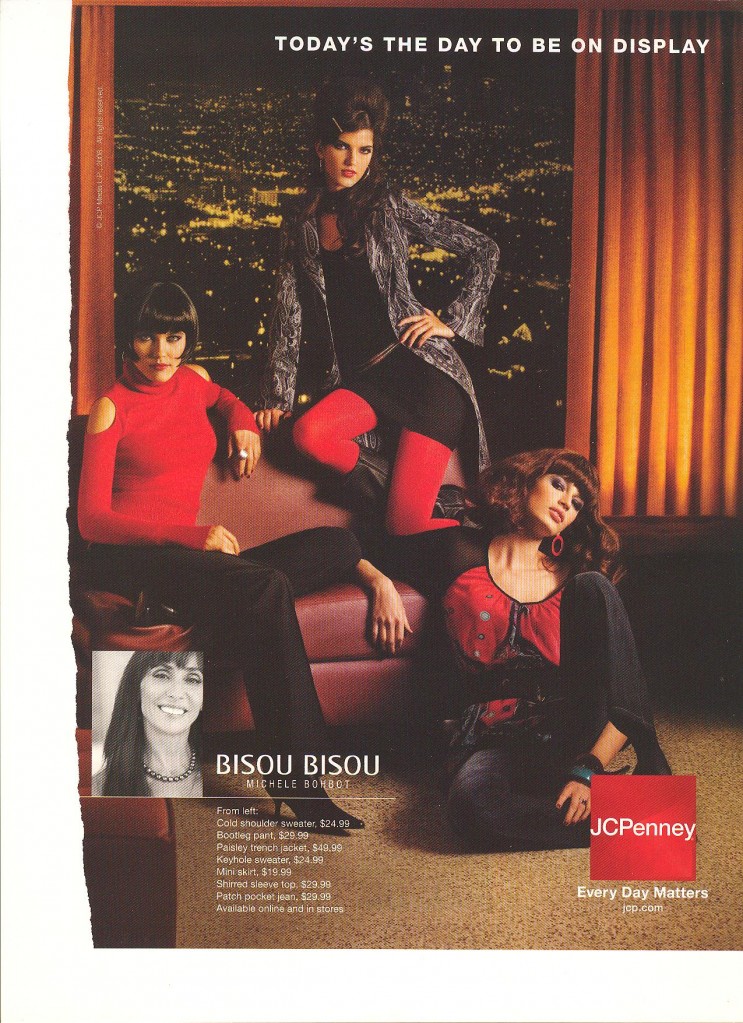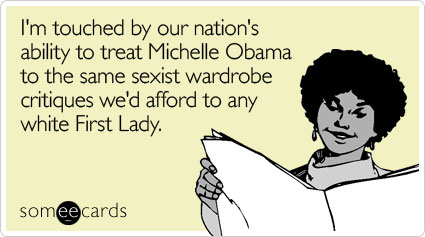
Some ecards via Feministe.

Some ecards via Feministe.
These clothing ads from 1928, featured on Jezebel, portray an ideal female form that is wildly different than the one we have today. Note the straight lines (no hips or boobs) and very short hair cuts:
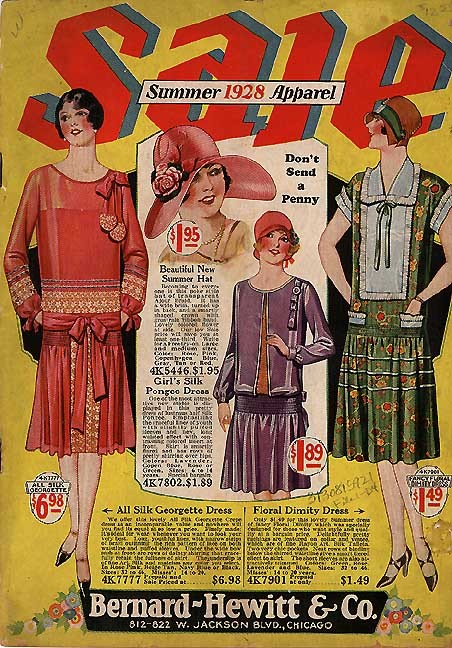
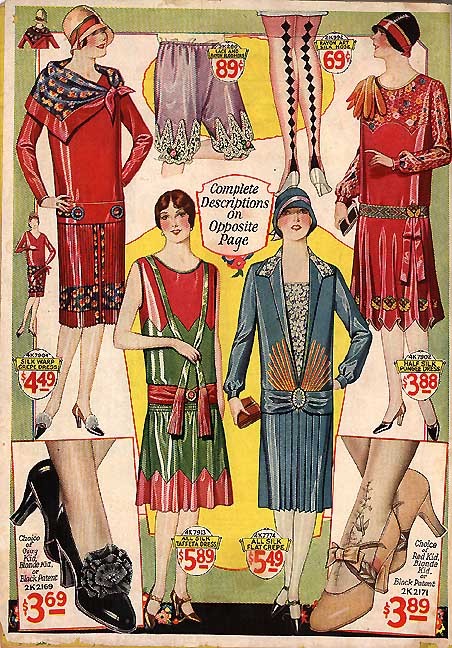
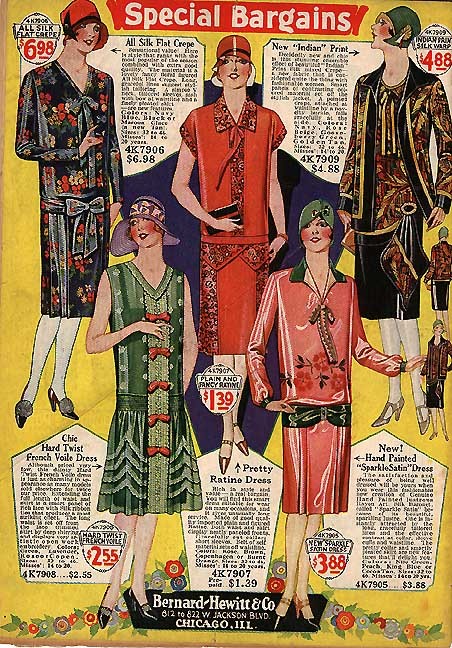
I also like how the first image reads “Summer 1928 Apparel.” Seasonal fashion, it appears, is nothing new.
In the Girl and Boy Scouts, merit badges represent the acquisition of skills and knowledge. Artist Mary Yaeger tries to draw attention to the skills and knowledge that girls and women in America aquire, whether they be scouts or not, with her own set of embroidered merit badges. They feature things like tolerating menstrual cramps, shaving armpits, taking the birth control pill, suffering through gyn exams, using mascara and lipstick, learning how to walk in high heels, wearing sexy underwear, and more.
The project nicely reminds us that women have to work hard to appear properly feminine, as well as the unique things we experience as women.
Via Jezebel.
Lisa Wade, PhD is an Associate Professor at Tulane University. She is the author of American Hookup, a book about college sexual culture; a textbook about gender; and a forthcoming introductory text: Terrible Magnificent Sociology. You can follow her on Twitter and Instagram.
From the website: “Project E-MANcipate is a project to accelerate the acceptance of male pantyhose as a regular clothing item.”
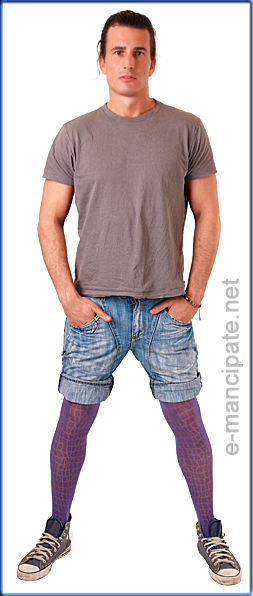
Hey, I’m all for men and women wearing pantyhose if they want to (as long as no one makes me wear any) but what sort of “emancipation” is being advocated?
Is this about emancipation men from the confines of masculinity so that they can wear an item associated with femininity?
“Men who wear pantyhose do it to improve athletic performance, energize and revitalize tired, aching leg muscles, and to stimulate circulation if they sit all day. In addition, compression can help reduce swelling and decrease the dangers of circulatory problems. And of course there are many men who simply like the soft material and the comfort that sheer pantyhose provides.”
So men would mostly wear pantyhose for (manly) athletic reasons. And, as the website also notes, to keep warm in the winter. But, some men might just like “the soft material.” What about them?
Or maybe the point is to emancipate pantyhose from being associated with only femininity?
“Since pantyhose (or tights), as a garment, has about it nothing gender-specific (such as a panty that fits only the female body, or a bra that is ‘organ-specific’), there is no reason why people of either sex should think of it as a female-only piece of clothing in everyday life.”
But, as the website points out, it’s important for guys to wear pantyhose in a way that doesn’t look “femmy”– “even hosiery that is thought to be very femmy could go together with an average outfit without making the whole outfit femmy at all.”
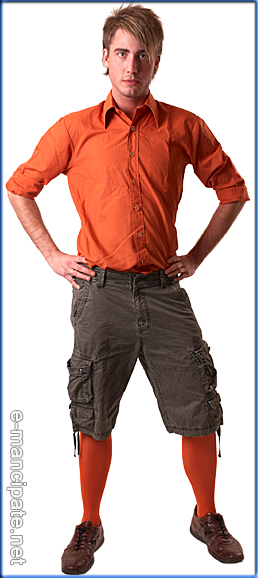
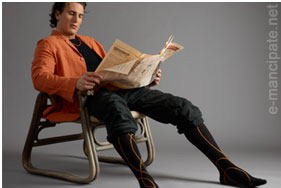
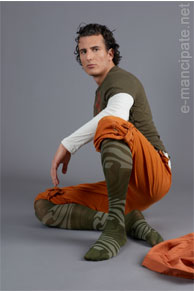
So how about pink pantyhose? Is pink too “femmy” for men?
The conclusion: “White pantyhose with floral patterns [as opposed to plain pink tights] makes you look like a man.”
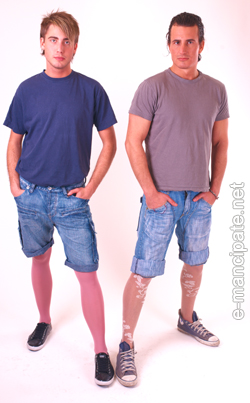
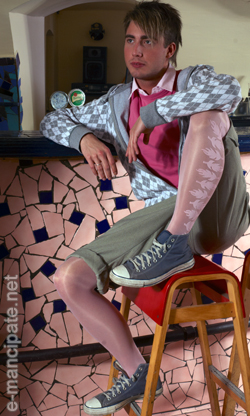 These images would be great for a class discussion on the reappropriation of gendered clothing items. What makes pantyhose specifically “manly” or “femmy”? Does this “e-MANcipation” reify the same old ideas about masculinity and femininity, or challenge and expand them?
These images would be great for a class discussion on the reappropriation of gendered clothing items. What makes pantyhose specifically “manly” or “femmy”? Does this “e-MANcipation” reify the same old ideas about masculinity and femininity, or challenge and expand them?
And I think it’s interesting that this website is U.K.-based. (UPDATE: The company is actually Hungarian– thanks to commenter “bozeman” for the clarification!) I have a hard time imagining a project like this in the U.S. How are ideas about what constitutes a “manly man” different from country to country?
A while back Laura M.D. sent us this image from the March issue of Teen Vogue (found at Jezebel):
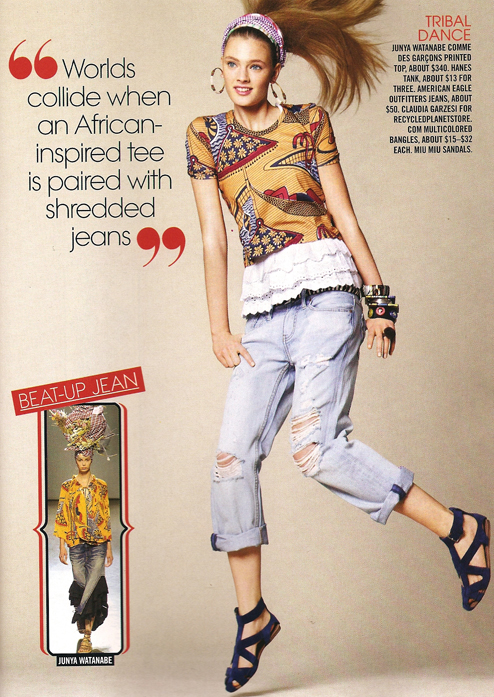
Really? This is all it takes to have a cross-cultural experience these days? It’s also interesting to me that this is defined as “African-inspired,” because I’ve seen “Asian-inspired” items that have a very similar look (though not the dark-skinned person in a hammock; maybe that’s the African element). We see this a lot in fashion–the attribution of vaguely “ethnic”-looking things to some part of the world, or specific culture, that may or may not be particularly associated with the supposed traditional fashion or artistic style.
If they wanted to talk about this outfit as a global collision, they might have discussed where all the different items (and the materials for them) were manufactured compared to where they are sold and worn.
See other posts on representing Africa, “ethnic” fashion, and more “ethnic” fashion.
UPDATE: In a comment, jfruh says,
Can I just say that one of my very least favorite adjectives is “tribal” (in the top right corner), which seems to be used indiscriminately to refer to any art with the whiff of the primitive about it? Vaguely Polynesian-looking tattoos, vaguely African-sounding drums, etc. It’s bad enough that the political organizational structures of wildly disparate cultures are lumped together under the word “tribe” just because they’re at a smaller scale than modern nation-states; now any art form that resonates at all with any culture perceived as primitive gets labelled tribal as well.
The New York Times has a fascinating peak into marketing logic. The team at Frito Lay discovered that women prefer to snack on veggies and fruit, but that didn’t deter them. They’re on a mission to sell more chips to the ladies.
Through market research, they discovered that women feel guilty. A lot. The article reads:
Though Frito-Lay had often tried advertising snacks as guilt-free, this led to the conclusion that “we’re not going to alleviate her guilt,” Ms. Nykoliation said. “This is something in her life. So the question for us was, how do we not trip her guilt?”
Part of the strategy was to follow the success of SunChips by toning down the packaging and showing off healthy ingredients in the snacks.
“She wants a reminder that she’s eating something better for her,” Mr. Jones said.
Baked Lay’s will no longer be in a shiny yellow bag, but in a matte beige bag that displays pictures of the ingredients like spices or ranch dressing.
So Frito Lay is attempting a guilt-detour. You don’t have to justify eating the bad-for-you-chips because they’re good-for-you-chips. The bag is a natural color instead of neon orange and there are actual food stuffs on the front instead of a Cheetah!
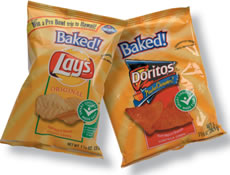
(image via)
This is a nice example of the appeal to nature as a marketing strategy. Of all of the marketing strategies out there designed to make us buy things that we don’t need and perhaps don’t even want, I suppose this is rather innocuous (though I could argue that it makes it more difficult for us to actually evaluate what foods are and are not “natural”).
Alongside this makeover, Frito-Lay is also starting a website and animated cartoon serial designed to appeal to women. I’ve embedded the “trailer” below. Notice how it affirms the idea that women are obsessed with food and their weight, at the same time that it is carefully crafted so as to encourage women to “cheat.” As the woman in the video says about her cookie: “So if I eat it standing up, it doesn’t count right?” And her friend replies: “Absolutely.” Everyone knows that it still “counts,” but when the one friend eggs on the other, we all feel more comfortable “cheating.” Frito Lay foods for everyone!
So the commercial reproduces the stereotype that women are boy crazed whiners with a deranged relationship to food and an embarassing obsession with shoes. [By the way, Gwen and I are, like, totally like this. It’s amazing we even have time to be sociologists, what with all the traipsing around in high heels, discussing diet fads, and oogling cute boys!]
Okay, so it reproduces rather repugnant ideas about women. What’s the harm?
On the first day of Sociology of Gender I ask students to introduce themselves and answer a few questions including: “Are you a stereotypical man or woman? Why or why not?” Inevitably the majority of students will say that they do not conform to the stereotype, that they both do and do not have characteristics associated with it, that they display human characteristics, not just ones associated with their sex. I then ask them: “What percentage of your friends and family fit the stereotype?” They respond similarly. I follow up: “How many of you regularly find yourself starting sentences with ‘Women are so…’ and ‘Men are so…’?” They all raise their hands.
This, I suggest, is interesting. Gender stereotypes don’t come from us and aren’t validated by our actual experiences. Yet, we still talk as if they were true. If we don’t affirm the stereotype, where do they come from and why do we believe that they are true?
Well, here’s part of the answer: We know what men and women are like because we are constantly told what women and men are like. This Frito Lay campaign is one source of this particular stereotype about women; more can be found here, here, here, here, here, here, here, and here.
Another question, and one I’d love to know the answer to, is: Why is it that, when cultural messages and actual experiences contradict each other, we come out endorsing the cultural messages?
Wandering through the junior section of the Palo Alto mall after Christmas this year, my stepsister Holly noticed the suggestive nature of some of the brands. We took pictures:
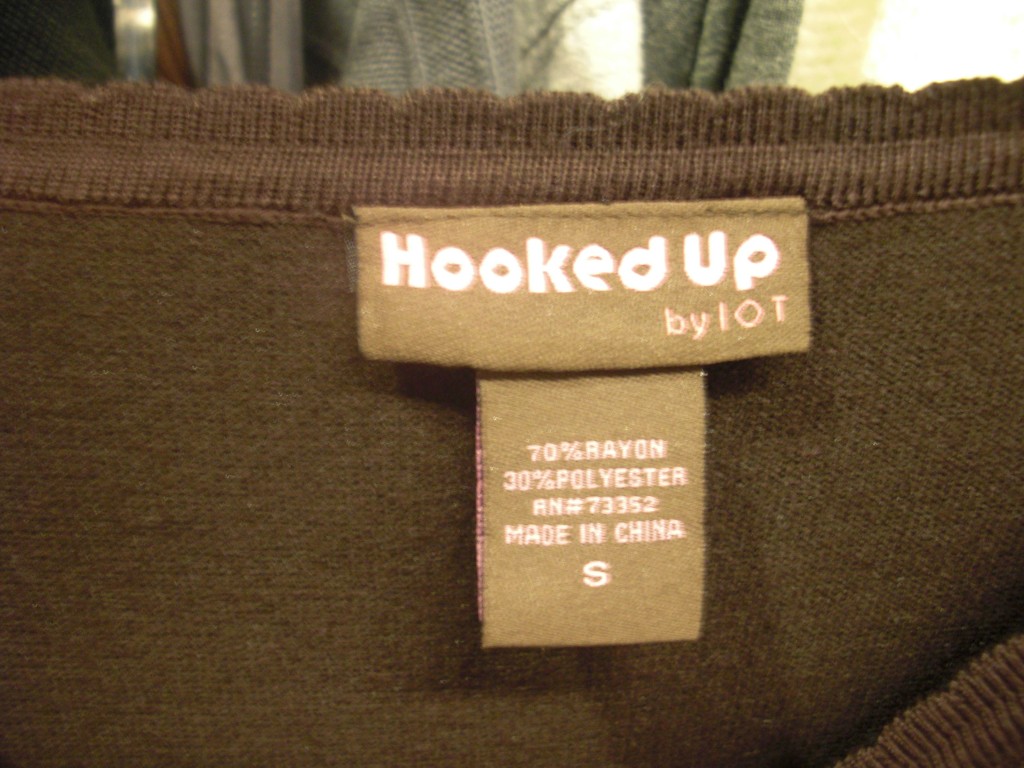
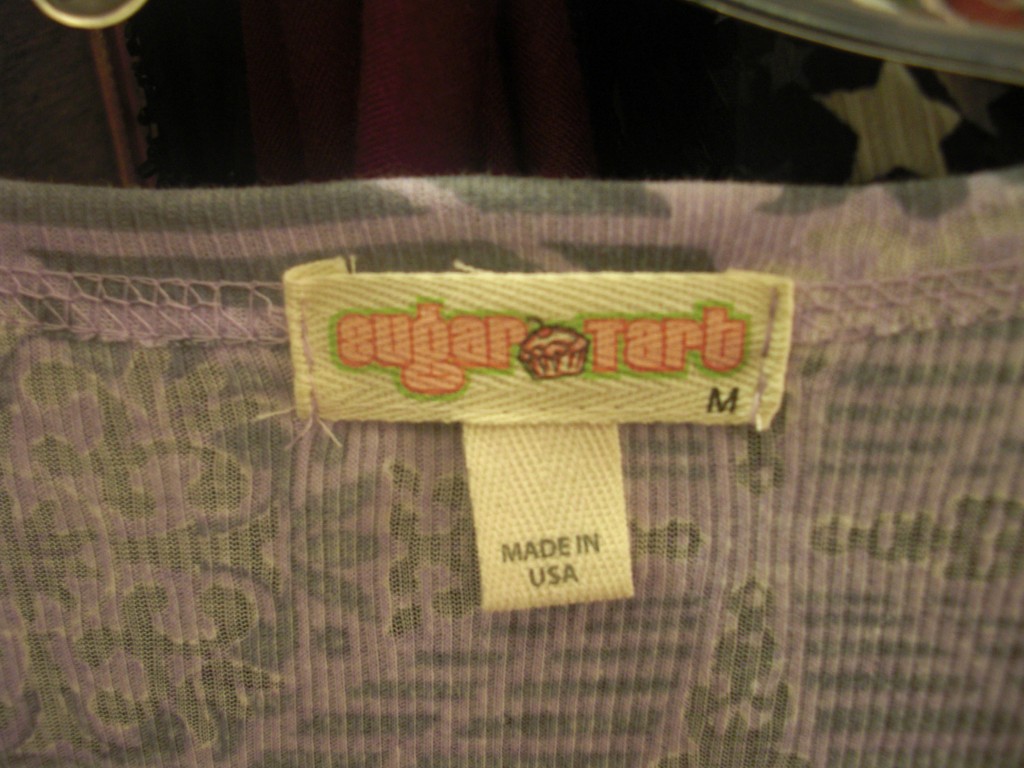
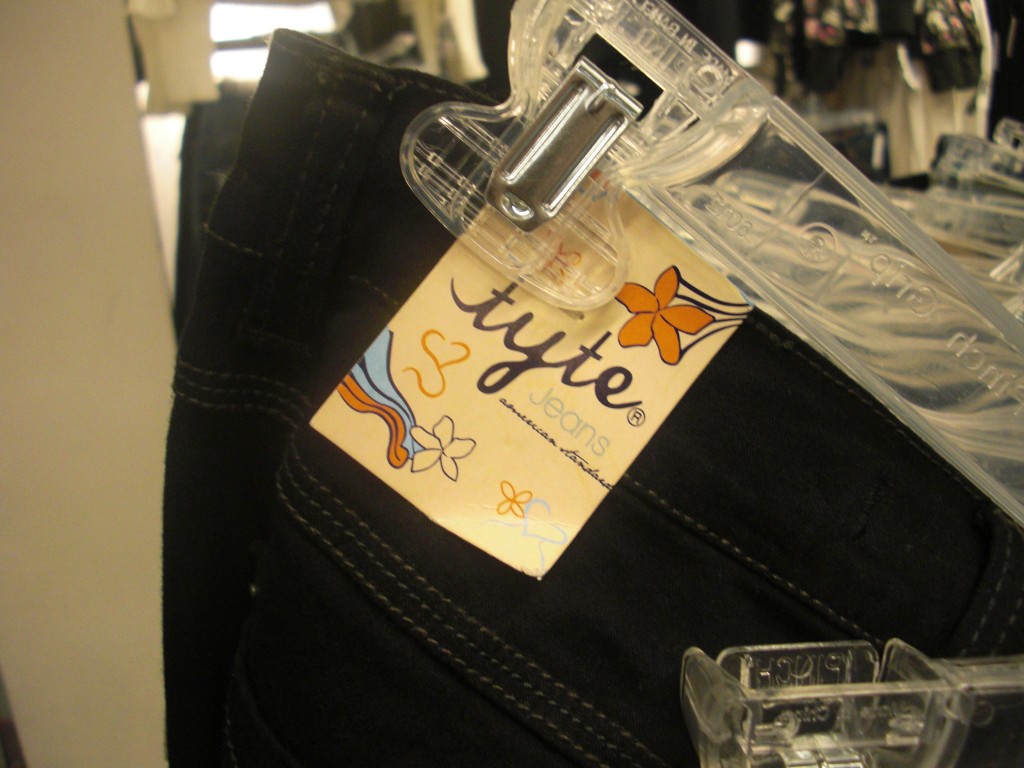
According to this JC Penney ad, “Today’s the day to be on display.” Okay, I get that. Sometimes it’s nice to show off, to look good, to shine.
If you look in the bottom right corner, though, JC Penney reminds us that “Every day matters.”
Sigh. Bein’ a chick is hard work.
